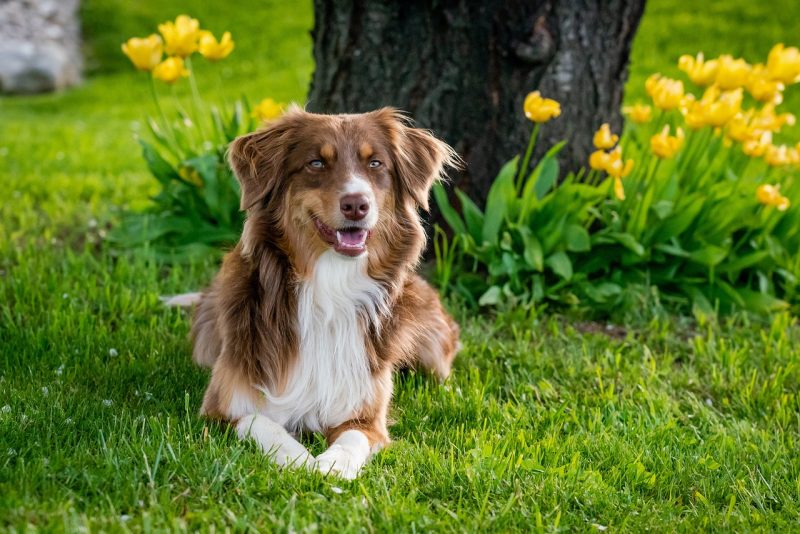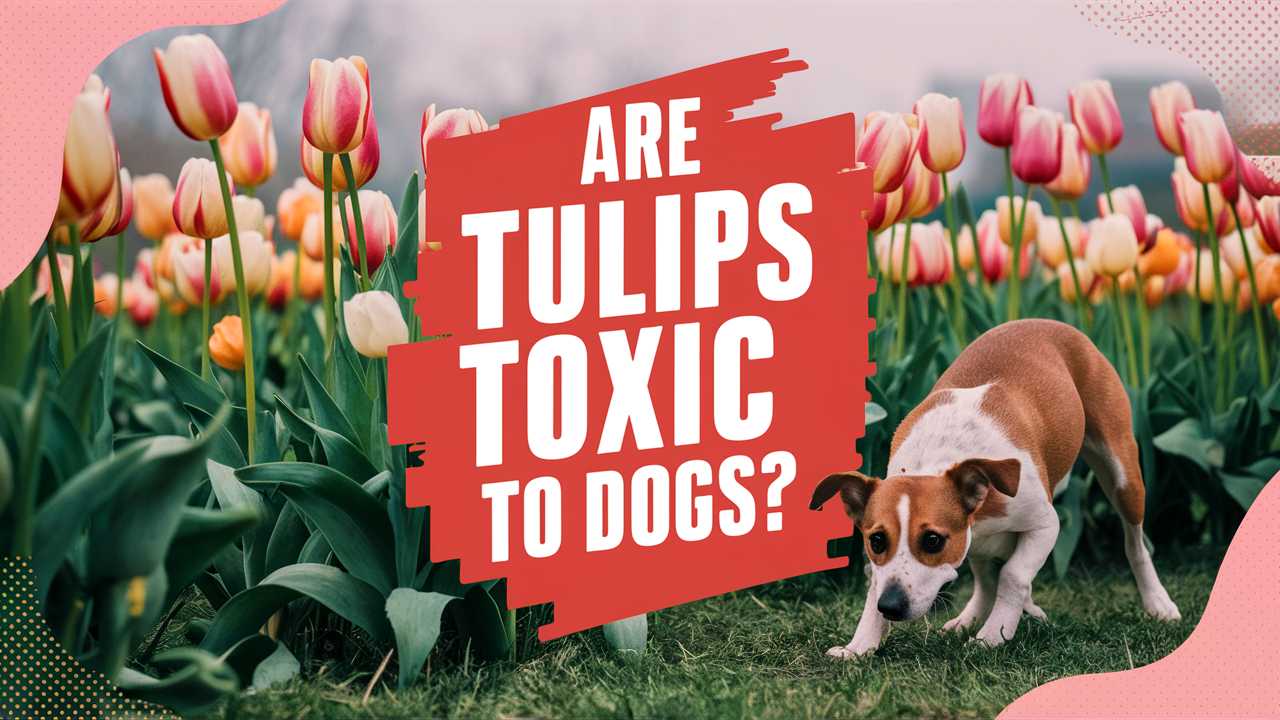In this post, we’ll explore the nature of tulips, explore their potential toxicity to dogs, and provide helpful advice on how to keep your pet safe around these beautiful blooms.
The Toxicity of Tulips

Tulips are classified as mildly toxic to dogs. The part of the plant that poses the most significant risk is the bulb. According to the American Society for the Prevention of Cruelty to Animals (ASPCA), tulip bulbs contain compounds called tulipalin A and tulipalin B. These natural defense chemicals help protect the plant from pests and are the primary reason for their toxicity.
When a dog ingests any part of a tulip, particularly the bulb, they can experience a range of symptoms. The body’s reaction can vary depending on the size and health of the dog, as well as the amount ingested. Symptoms may include drooling, diarrhea, vomiting, abdominal pain, and, in severe cases, breathing difficulties. Recognizing these symptoms early is crucial for the well-being of your pet.
Signs of Tulip Poisoning in Dogs

Being vigilant about your dog’s health involves knowing the warning signs of potential poisoning. The symptoms of tulip toxicity in dogs typically manifest within a few hours after ingestion. Common signs include:
Vomiting: One of the first responses your dog may exhibit is vomiting. This is the body’s way of trying to expel the harmful substances.
Diarrhea: Accompanying vomiting, dogs may experience diarrhea as their gastrointestinal system reacts to the toxins from the tulip.
Excessive Drooling: If your furry friend begins to drool excessively, it could be a sign that they ingested something undesirable.
Lethargy: A normally energetic dog might become unusually tired and less interested in activities when suffering from tulip poisoning.
Abdominal Pain: Dogs may exhibit signs of discomfort, such as whining, pacing, or adopting unusual positions to alleviate pain.
Difficulty Breathing: In severe cases, your dog may have trouble breathing, which is a significant emergency situation.
What to Do If Your Dog Has Ingested Tulips
If you suspect your dog has ingested tulips, it’s crucial to act quickly. Here’s what you should do:
Stay Calm: Panic can lead to rash decisions. Remain composed and assess the situation carefully.
Determine the Amount Ingested: If possible, try to find out how much of the tulip was consumed. Was it just a petal, a leaf, or was it the bulb?
Call Your Veterinarian: Contact your vet immediately. Describe the situation, including what part of the tulip was ingested, the amount, and any symptoms your dog is showing.
Follow Veterinary Advice: Your vet may instruct you to bring your dog in for an examination or provide guidance on monitoring symptoms at home. In some cases, they may recommend inducing vomiting.
Avoid Home Remedies: It’s best not to try home remedies unless directed by a veterinarian, as some can exacerbate the situation.
Prevention: Keeping Your Dog Safe from Tulips

As a dog owner, you can take proactive measures to ensure your pet stays safe from tulips and other potentially harmful plants. Here’s how:
Educate Yourself: Familiarize yourself with plants that are toxic to dogs. The ASPCA has an excellent list of toxic and non-toxic plants, which can serve as a useful reference.
Plant Smartly: If you love tulips, consider placing them in gardens that are inaccessible to your dog. Raised beds or fenced areas can provide a safe distance.
Use Barriers: If you have tulips in your garden, consider using physical barriers like fencing or garden gates to keep your dog from wandering into hazardous areas.
Create a Designated Space: Create a pet-friendly area in your garden filled with safe plants and flowers. This can allow your dog to enjoy the outdoors without coming into contact with hazardous plants.
Train Your Dog: Teaching commands like “leave it” or “no” can help discourage your dog from chewing or ingesting undesirable plants. Consistent training reinforces boundaries.
Other Flowers to Watch Out For

While tulips are beautiful, they aren’t the only plants that can pose a risk to dogs. Many common garden flowers can be toxic to pets, including:
Lilies: All types of lilies are toxic to cats and can cause kidney failure, but they’re also harmful to dogs.
Daffodils: These spring favorites can lead to vomiting, diarrhea, and even more severe complications if ingested.
Rhododendron: This popular shrub can lead to severe gastrointestinal distress in dogs, and in more serious cases, affect the heart.
It’s crucial to monitor not just tulips but also the overall flora surrounding your pet’s environment.
Conclusion: The Beauty of Tulips vs. Pet Safety
Tulips undoubtedly enhance the visual appeal of gardens and homes alike, bringing brightness and color that signify the arrival of spring. However, as responsible pet owners, it’s our duty to balance that beauty with the safety and well-being of our canine companions. While tulips are mildly toxic to dogs, proper knowledge and preventive measures can significantly reduce any risks associated with their presence.





